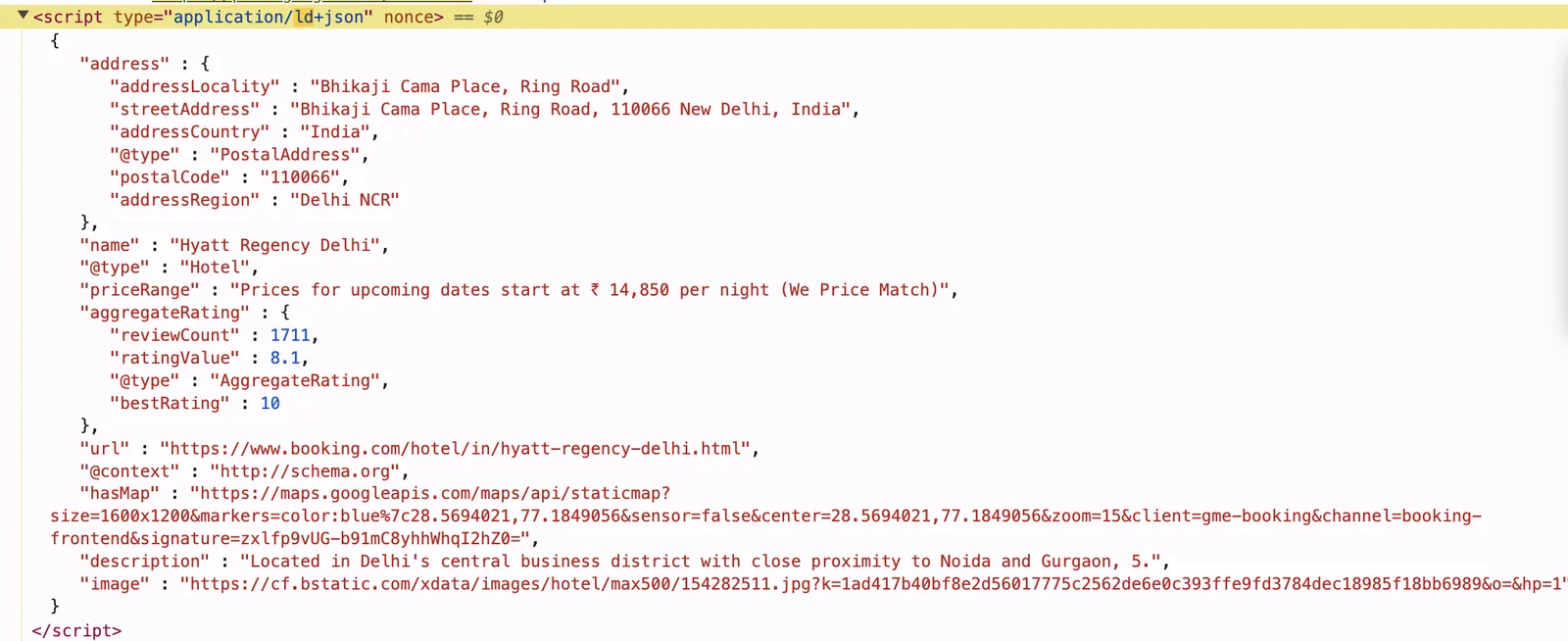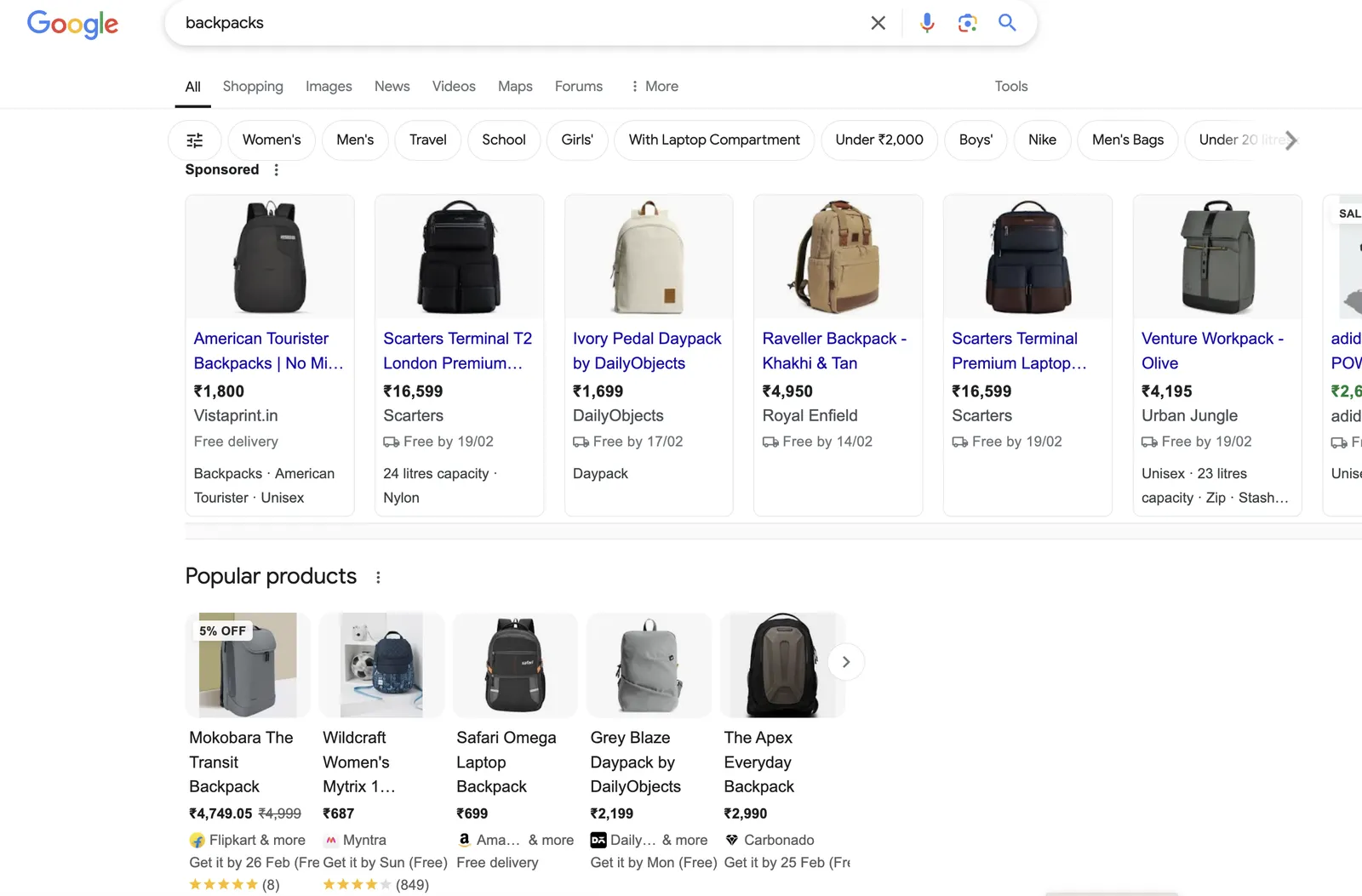Complete guide to JSON-LD for SEO - for SaaS and E-commerce
February 12, 2023 | Reading time: 6 minutes
Optimizing your website's structured data with JSON-LD can significantly improve your visibility in search results. This guide breaks down essential concepts and implementation strategies for businesses of all types.
What is JSON-LD?
JSON-LD (JavaScript Object Notation for Linked Data) is a lightweight data interchange format designed to create machine-readable structured data on websites. It works in conjunction with Schema.org vocabulary to help search engines better understand your content, which can lead to enhanced search results and improved visibility online.
Unlike traditional HTML markup, JSON-LD is implemented using a script tag in the head or body of your HTML, making it easier to maintain and less likely to interfere with your site's design or functionality. It's Google's preferred structured data format due to its simplicity and flexibility.
The standard was introduced in late 2010s by Google.
When you see a rich Search Results snippet - say reviews, ratings, prices - Google is using JSON-LD to provide this information.



JSON-LD and Schema.org: A Comprehensive Guide for SaaS and E-commerce
html<script type="application/ld+json"> { "@context": "https://schema.org", "@type": "Organization", "name": "Your Business Name", "url": "https://www.yourbusiness.com", "logo": "https://www.yourbusiness.com/logo.png" } </script>
The benefits of implementing JSON-LD include:
- Enhanced search results with rich snippets
- Improved mobile search visibility
- Better understanding of your content by search engines
- Potential boost in click-through rates
- Competitive advantage in your industry
Common Categories of JSON-LD
1. Website Markup
Website markup provides general information about your site, helping search engines understand its structure and purpose.
html<script type="application/ld+json"> { "@context": "https://schema.org", "@type": "WebSite", "name": "Your Website Name", "url": "https://www.yourwebsite.com", "potentialAction": { "@type": "SearchAction", "target": "https://www.yourwebsite.com/search?q={search_term_string}", "query-input": "required name=search_term_string" } } </script>
This example includes a SearchAction that tells Google about your site's search functionality, potentially enabling a sitelinks search box in search results.
2. Organization Markup
Organization markup is crucial for establishing your brand identity online, particularly for local SEO.
html<script type="application/ld+json"> { "@context": "https://schema.org", "@type": "Organization", "name": "Your Company Name", "url": "https://www.yourcompany.com", "logo": "https://www.yourcompany.com/logo.png", "contactPoint": { "@type": "ContactPoint", "telephone": "+1-555-123-4567", "contactType": "customer service", "availableLanguage": ["English", "Spanish"] }, "sameAs": [ "https://www.facebook.com/yourcompany", "https://www.twitter.com/yourcompany", "https://www.linkedin.com/company/yourcompany" ] } </script>
The "sameAs" property links to your social profiles, helping search engines verify your brand's online presence across multiple platforms.
3. Product Markup
For e-commerce sites, product markup is essential for displaying rich product information in search results.
html<script type="application/ld+json"> { "@context": "https://schema.org", "@type": "Product", "name": "Premium Ergonomic Office Chair", "image": "https://www.yourstore.com/chair.jpg", "description": "Adjustable office chair with lumbar support and breathable mesh back", "brand": { "@type": "Brand", "name": "ErgoComfort" }, "offers": { "@type": "Offer", "price": "299.99", "priceCurrency": "USD", "availability": "https://schema.org/InStock" }, "aggregateRating": { "@type": "AggregateRating", "ratingValue": "4.7", "reviewCount": "89" } } </script>
This markup enables rich snippets that display price, availability, and ratings directly in search results, potentially increasing click-through rates.
4. WebApplication Markup
For SaaS businesses, WebApplication markup helps define your software offerings.
html<script type="application/ld+json"> { "@context": "https://schema.org", "@type": "WebApplication", "name": "Project Management Pro", "applicationCategory": "BusinessApplication", "operatingSystem": "All", "offers": { "@type": "Offer", "price": "29.99", "priceCurrency": "USD", "priceValidUntil": "2023-12-31" }, "aggregateRating": { "@type": "AggregateRating", "ratingValue": "4.8", "reviewCount": "512" } } </script>
5. Other Relevant Types
Article/BlogPosting
For content-heavy sites, Article markup improves visibility for your blog posts and articles.
html<script type="application/ld+json"> { "@context": "https://schema.org", "@type": "BlogPosting", "headline": "10 Tips for Improving Your SaaS Marketing Strategy", "image": "https://www.yourblog.com/images/saas-marketing.jpg", "datePublished": "2023-03-15T08:00:00+08:00", "dateModified": "2023-03-16T09:30:00+08:00", "author": { "@type": "Person", "name": "Jane Smith" } } </script>
FAQ
FAQ markup can help your content appear in featured snippets for question-based searches.
html<script type="application/ld+json"> { "@context": "https://schema.org", "@type": "FAQPage", "mainEntity": [{ "@type": "Question", "name": "What is JSON-LD?", "acceptedAnswer": { "@type": "Answer", "text": "JSON-LD is a lightweight data format that helps search engines understand the content on your website through structured data." } }, { "@type": "Question", "name": "How does JSON-LD improve SEO?", "acceptedAnswer": { "@type": "Answer", "text": "JSON-LD helps search engines understand your content better, which can lead to enhanced search results with rich snippets, potentially improving click-through rates." } }] } </script>
Implementation Guidelines for SaaS Businesses
When implementing JSON-LD for a SaaS business, consider these best practices:
-
Focus on WebApplication markup: Clearly define your software's features, pricing, and compatibility.
-
Implement Organization markup: Establish your brand identity and highlight customer service options.
-
Use SoftwareApplication type: If your software can be downloaded, consider using this type instead of WebApplication.
-
Highlight unique features: Use the "featureList" property to showcase what sets your software apart.
-
Include free trial information: If you offer a free trial, make sure to specify this using appropriate properties.
-
Document API endpoints: If you offer an API, consider using the "programmingInterface" property to document its capabilities.
-
Showcase integrations: Use the "softwareAddOn" property to highlight compatible platforms and services.
Implementation example for SaaS:
html<script type="application/ld+json"> { "@context": "https://schema.org", "@type": "SoftwareApplication", "name": "CloudAnalytics Pro", "applicationCategory": "BusinessApplication", "operatingSystem": "Cloud-based, accessible on all platforms", "offers": { "@type": "Offer", "price": "49.99", "priceCurrency": "USD", "priceValidUntil": "2023-12-31", "description": "Monthly subscription with unlimited access" }, "aggregateRating": { "@type": "AggregateRating", "ratingValue": "4.9", "reviewCount": "327" }, "featureList": "Real-time analytics, Custom dashboards, API access, Unlimited users, Data export" } </script>
Implementation Guidelines for E-commerce Platforms
For e-commerce websites, consider these implementation strategies:
-
Prioritize Product markup: Every product page should have structured data that includes pricing, availability, and reviews.
-
Implement breadcrumb navigation: Help search engines understand your site's category structure.
-
Use Offer and AggregateOffer appropriately: For products with multiple options or pricing tiers, structure your data correctly.
-
Include multiple product images: The "image" property can accept an array of images.
-
Specify shipping details: Use the "shippingDetails" property to provide information about delivery options.
-
Highlight reviews: Include both aggregate ratings and individual reviews when possible.
-
Implement Organization markup on your homepage: Establish your store's identity and business information.
Implementation example for e-commerce:
html<script type="application/ld+json"> { "@context": "https://schema.org", "@type": "Product", "name": "Wireless Noise-Cancelling Headphones", "image": [ "https://example.com/headphones-black.jpg", "https://example.com/headphones-silver.jpg" ], "description": "Premium wireless headphones with active noise cancellation and 30-hour battery life", "sku": "HP12345", "mpn": "925872", "brand": { "@type": "Brand", "name": "AudioPro" }, "offers": { "@type": "Offer", "url": "https://example.com/headphones", "price": "249.99", "priceCurrency": "USD", "priceValidUntil": "2023-06-30", "availability": "https://schema.org/InStock", "shippingDetails": { "@type": "OfferShippingDetails", "shippingRate": { "@type": "MonetaryAmount", "value": "0", "currency": "USD" }, "deliveryTime": { "@type": "ShippingDeliveryTime", "handlingTime": { "@type": "QuantitativeValue", "minValue": "0", "maxValue": "1", "unitCode": "DAY" }, "transitTime": { "@type": "QuantitativeValue", "minValue": "1", "maxValue": "3", "unitCode": "DAY" } } } }, "review": { "@type": "Review", "reviewRating": { "@type": "Rating", "ratingValue": "5", "bestRating": "5" }, "author": { "@type": "Person", "name": "Michael Johnson" }, "reviewBody": "These headphones completely transformed my commute. The noise cancellation is exceptional." }, "aggregateRating": { "@type": "AggregateRating", "ratingValue": "4.8", "reviewCount": "152" } } </script>
Conclusion
Implementing JSON-LD with Schema.org vocabulary is a powerful way to improve your website's visibility in search results, regardless of whether you're running a SaaS business or an e-commerce platform. The key is to carefully select the appropriate schema types for your content and provide as much detailed, accurate information as possible.
By following the guidelines outlined in this article, you'll be well on your way to creating structured data that helps search engines better understand your website, potentially leading to improved rankings, enhanced search results, and increased organic traffic.
Remember that JSON-LD implementation should be an ongoing process. As your business evolves and search engines update their algorithms, review and refine your structured data to ensure it continues to accurately represent your offerings and meet current best practices.